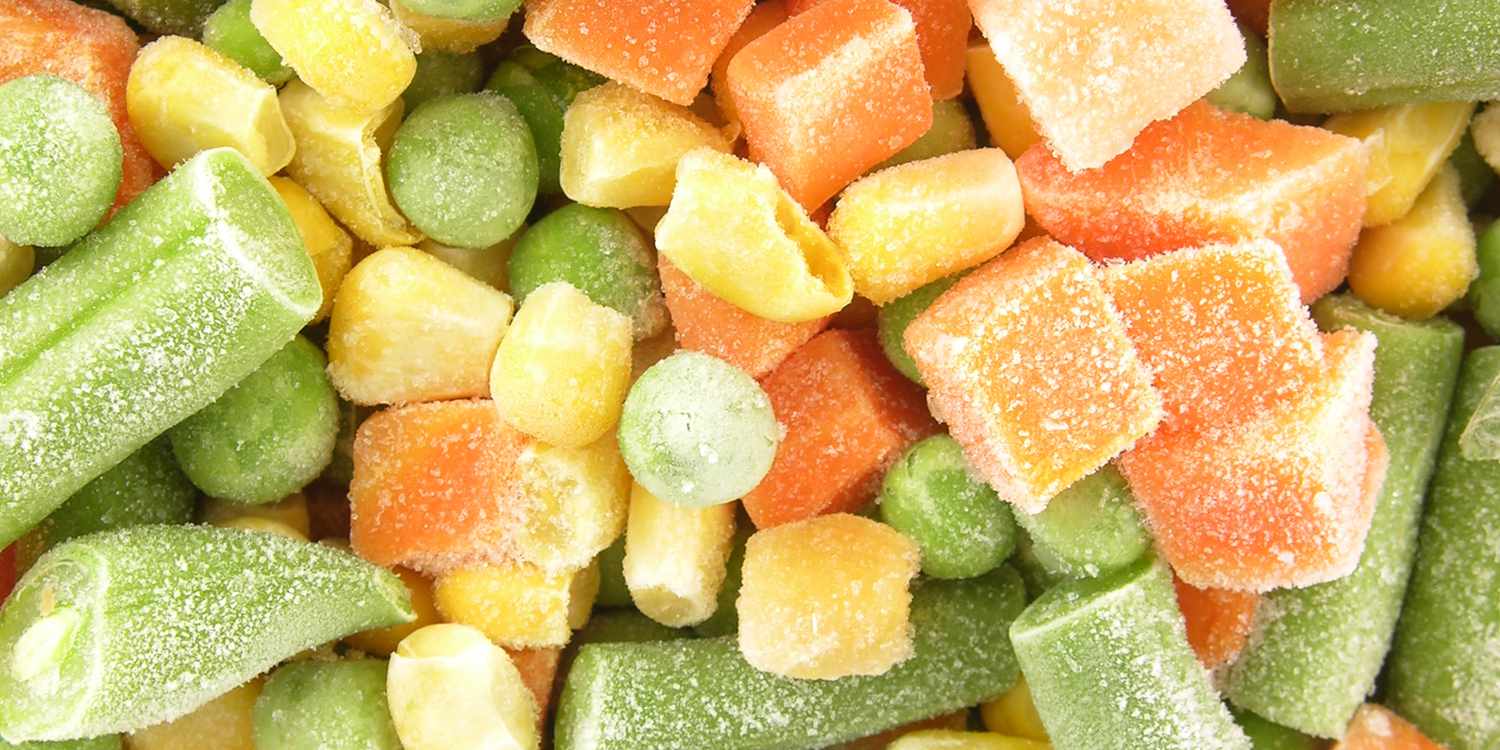When it comes to getting your greens in, it doesn’t matter if they’re bought fresh or frozen —you’re still getting that nutritional punch. If a vegetable is in season, on sale, or if you’re going to be cooking with it within a day or two, it could be the right purchase at the time.
However, when you’re looking to keep veggies on hand for easy weeknight meals, and need to get a better bang for your buck, frozen is the way to go.
Still, there’s a chance you could be making a few common mistakes when cooking frozen vegetables, which can leave your dish tasting lackluster. Avoid these traps for delicious, nutritionally dense meals with your favorite frozen produce.
Thinking All Frozen Veggies Need to Be Cooked
Nope, you can eat frozen veggies as-is—no pot, pan or microwave required. “You do not need to cook frozen veggies, just like you don’t need to cook frozen fruit,” says Toby Amidor, MS, RD, best-selling cookbook author of Smart Meal Prep for Beginners and The Healthy Meal Prep Cookbook.
“You can defrost them and then toss on a salad — though you will need to make sure they’re fully defrosted and slightly at room temperature to do so,” she says.
Eating veggies raw actually increases their nutritional value and saves you time. “Exposure to high heat can degrade certain nutrients, such as vitamin C, but don’t worry too much, you really have to overcook to destroy all of the vitamins,” says Dana Angelo White, MS, RD, author of Healthy Air Fryer Cookbook.
For example, “frozen corn can just be run under cold water to defrost, and then it’s ready to add to a salad. Heating and then cooling is fine too, but takes longer,” she says. “I love adding frozen cauliflower to smoothies to boost the nutrients, plus it helps make the smoothie perfectly frosty,” she adds.

Get the recipe : Sheet Pan Roasted Vegetables
Defrosting All Frozen Vegetables
This step isn’t always necessary, and it’ll drain you of time. “It really depends on what you are cooking. Frozen vegetables, no matter which, can be cooked from a frozen state,” says Amidor.
“Because they are small pieces (compared to a big beef or pork roast, for example) as long as they reach a minimum internal cooking temperature of about 135 degrees F they are safe to eat,” she says, meaning defrosting isn’t required.
What’s more, defrosting might actually backfire when it comes to frozen herbs, says White. “Frozen herbs can be a wonderful flavor booster but they can’t be defrosted and then used – they lose their structure during the freezing process so be sure to add them directly to hot foods such as soups, sauces and cooked pasta,” she says.
“For other veg like broccoli or bell peppers you have more wiggle room. They can defrost and then be reheated without losing their integrity,” she says, while most other vegetables can go either way. However, in some cases, you may want to fully defrost and remove the liquid from the frozen vegetable to avoid making your dish watery, Amidor says.
Only Sticking to a Microwave
Microwaving vegetables is a great way to cook them when you’re pinched for time. “The microwave is best for foods with a smaller surface area — I would never take the extra time to defrost bagged frozen veg like green beans, corn, peas, and carrots on the stovetop when I can just pop them in the microwave,” says White.
Yet, “just like any moist heat method, however, if left too long it can destroy some of the vitamins,” says Amidor. Instead, you could try steaming, blanching, sautéing (in very little oil or cooking spray), or stir frying, she says.
If you are using a microwave, which is totally okay, be vigilant about your cook time. “The microwave itself can affect how long food needs to be cooked. Start with 60 secs and add from there. It’s also important to stir, as most microwaves produce hot spots,” White says.
Not Varying the Cooking Time
Frozen vegetables can vary in cooking time, so don’t assume all types of veggies can be treated the same.
“Different vegetables have different cooking times. For smaller pieces, or thinner or softer foods, they will have a quicker cooking time (think pea-carrot mixture),” says Amidor. “However, for foods like squash or large chunks of vegetables, they may need a little extra time to cook through,” she says.
It’s also helpful to add a splash of water to these smaller foods, like peas and corn, for more even cooking, says White.
And you’ll probably want to cook larger foods, too, rather than eat them raw. “I guess the biggest ones that really should be cooked are potatoes, sweet potato, and butternut squash to make them more tender and easier to eat,” says White.
Tip: Always read the manufacturer’s directions for the best cooking times before beginning a recipe.
Related:
- Freezer-Friendly Dinners the Whole Family Will Love
- 10 Ways to Build Your Dinner From Your Freezer Stash
- 10 Surprising Foods You Can Buy in the Freezer Aisle (and Should)




